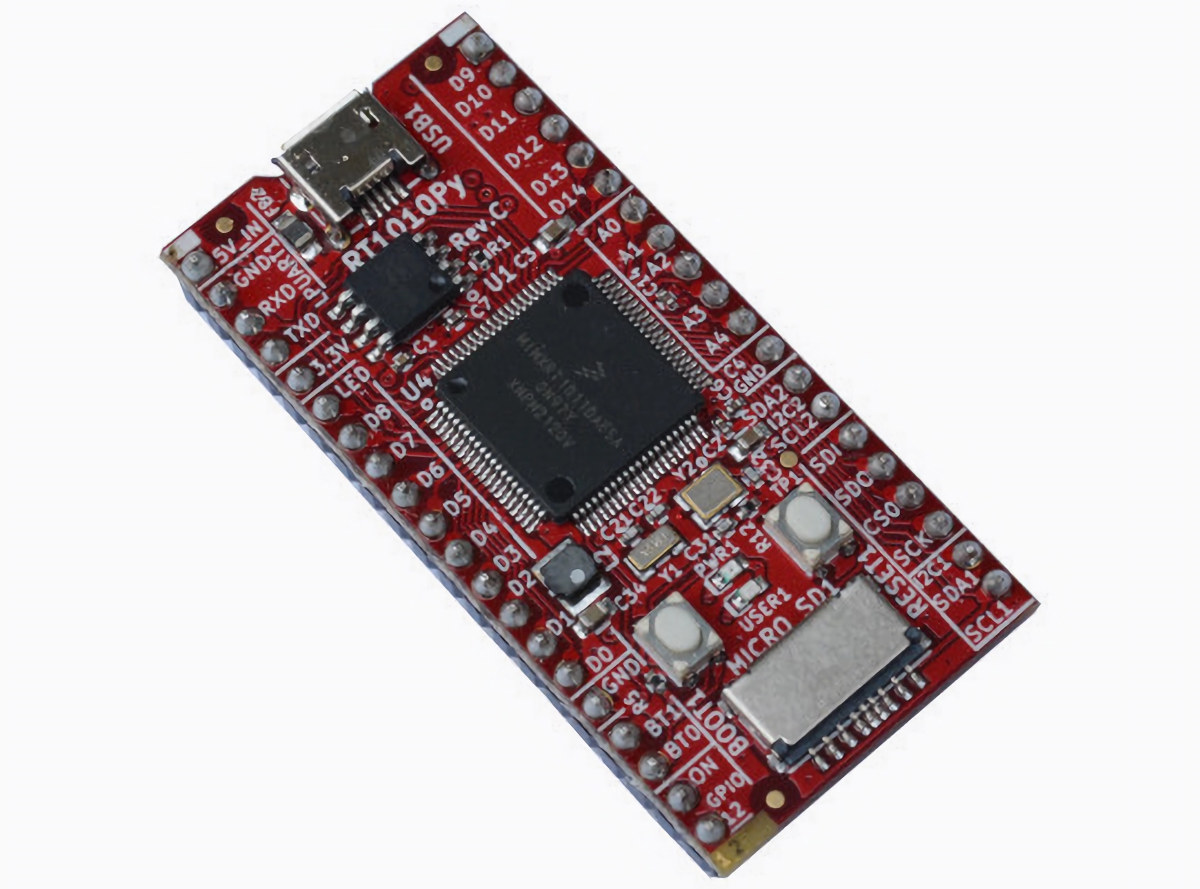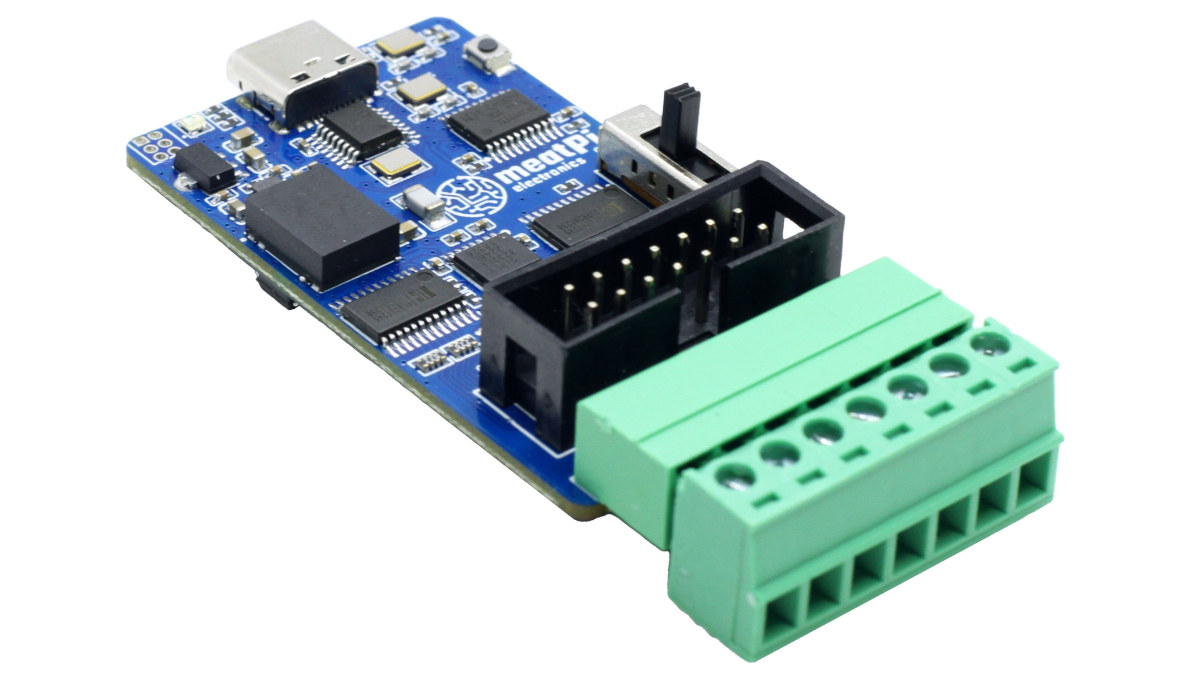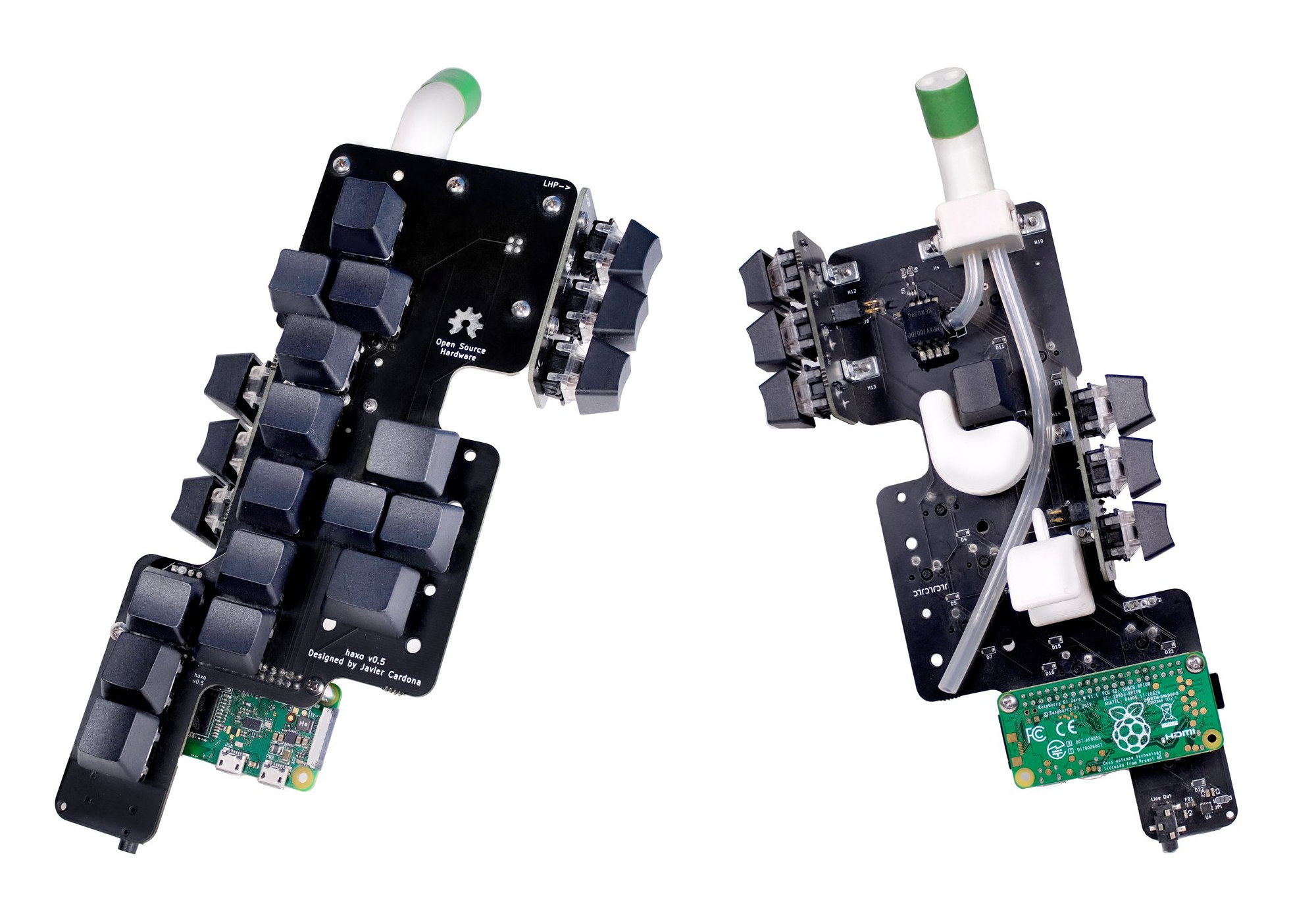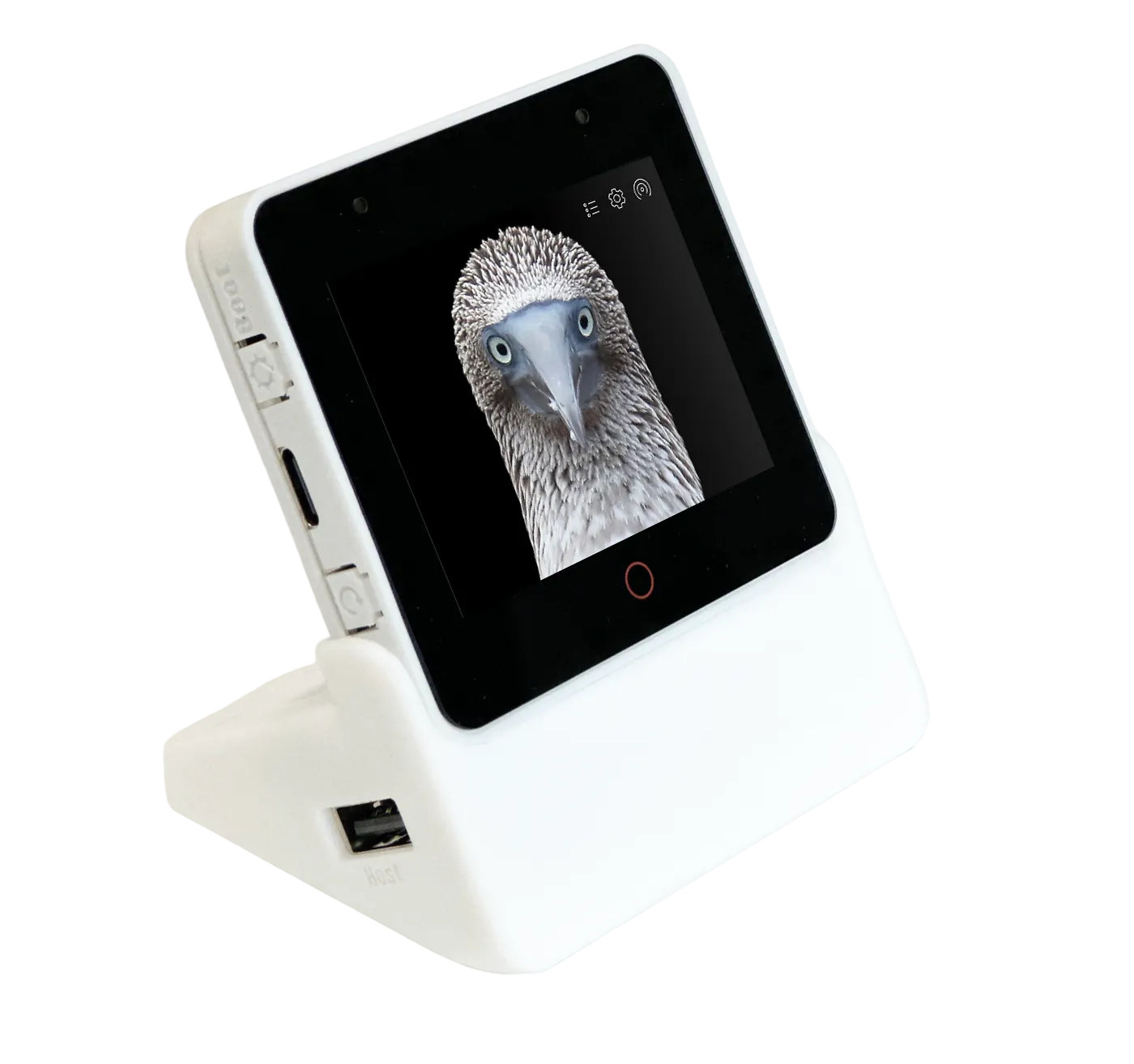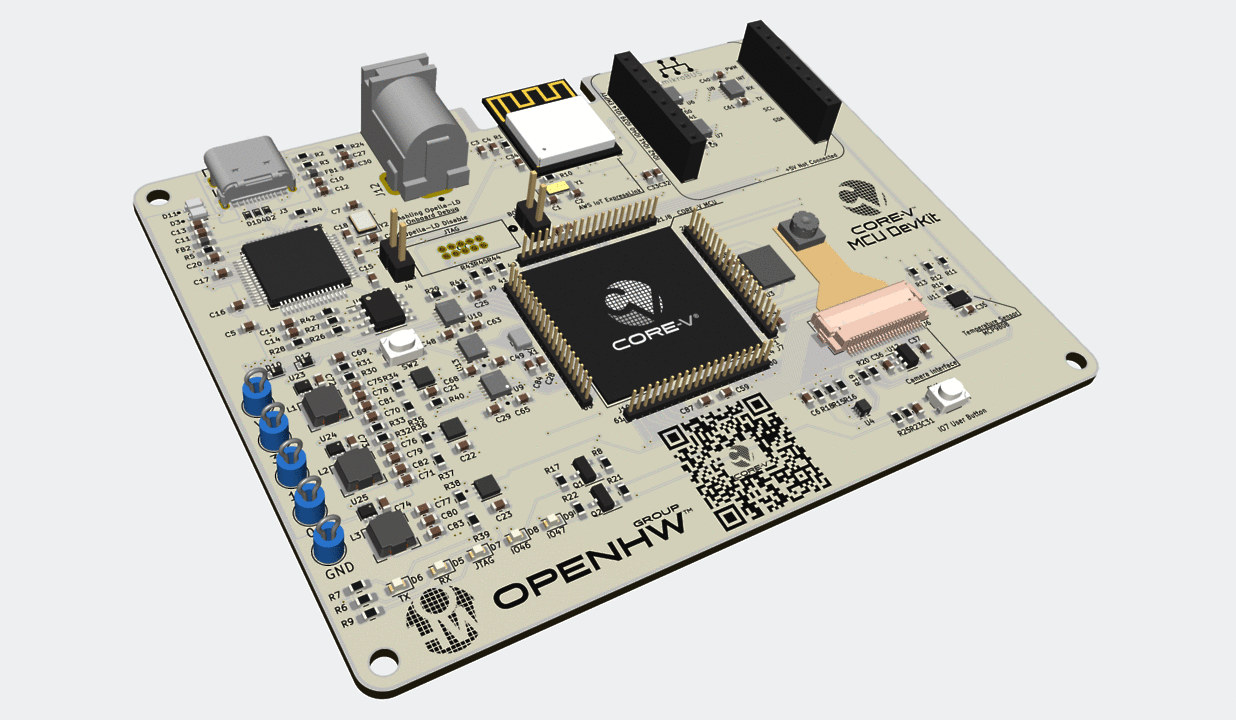Olimex RT1010-Py is a small development board powered by a 500 MHz NXP i.MX RT1011 Cortex-M7 MCU designed to run MicroPython and about four times faster than the Raspberry Pi Pico. The board comes with two 20-pin GPIO headers exposing various interfaces such as SPI and I2C, a microSD card slot for storage, two buttons, and a USB-C Type port for power and programming. The RT1010-Py also includes a 12-pin fUEXT connector to connect Olimex’s UEXT modules via a flat cable. Olimex RT1010-Py specifications: SoC – NXP iMX RT1011 crossover microcontroller with an Arm Cortex-M7 clocked at 500 MHz and 128KB SRAM/TCM Storage – 2MB SPI Flash, microSD card slot USB – 1x USB 2.0 OTG Type-C port Expansion 2x 20-pin headers with up to 15x GPIO, 3x UART, 2x SPI, 2x I2C, 1x I2S, 4x PWM. 5x analog input fUEXT connector (12-pin flat cable 0.5 mm step connector) with […]
Ollie v2 USB to UART/CAN/RS485/RS232 converter gets USB-C port, plastic enclosure, and more (Crowdfunding)
Ollie v2 is an improved version of the Ollie USB to isolated UART, CAN Bus, RS232, and RS485 converter that gains a USB-C port, a plastic case, the ability to set the voltage from the target board, and various other minor improvements. Like the first version, the Ollie v2 is a portable tool designed for hackers and field engineers that allows them to work with a single device instead of a bunch of USB converters, each handling a single protocol, and isolation makes sure the host, such as a laptop, is protected from high voltages. Ollie V2 specifications: Serial chip – WCH CH344 quad-serial port chip (instead of XR21V1414 in the first design) Host interface – USB Type-C port Isolated interfaces (all with ESD protection) 2x UART ports up to 6 Mbps with 1.8/3.3/5 V or target voltage levels (set by slide switch) CAN 2.0A/B up to 1 Mbps bus […]
Haxophone – A Raspberry Pi-based electronic saxophone with mechanical keys (Crowdfunding)
The Haxophone is an unusual Raspberry Pi expansion board that transforms the popular SBC into a travel saxophone using mechanical keys. The hackable musical instrument is open-source hardware and OSHWA certified and comes with mechanical keys which makes it easily repairable, customizable by changing keycaps or the firmware, and at a price point cheaper than commercial digital saxophones with custom molded keys. Haxophone key features and specifications: Custom Raspberry Pi HAT PCB Tactile-feedback 5-pin mechanical switches Mechanical keycaps Airflow pressure sensor Built-in audio amplifier compatible with Raspberry Pi Zero and Zero W Serial console for hacking Weight – 180 grams OSHW certifications – PT000005 You’ll find KiCAD hardware design files, assembly instructions, documentation, and the software and firmware used with the Haxophone on GitHub. There are two main software components, first haxo-rs Rust-based driver for detecting key presses and breath in order to convert them into notes, and fluidsynth synthesizer […]
ESP32-S3-BOX-3 devkit comes with 2.4-inch display, dual microphone, PCIe expansion connector
Espressif Systems has launched an update to their ESP32-S3-Box development kit for online and offline voice assistants with the ESP32-S3-BOX-3 devkit that still features a 2.4-inch capacitive touchscreen display with 320×240 resolution, two microphones, a built-in speaker, and a USB-C port, but replaces the PMOD connector by a PCIe connector for various expansion modules. The open-source ESP32-S3 development kit is powered by the ESP32-S3 SoC with AI extensions and can be used to implement all sorts of solutions using the company’s ESP-SR, ESP RainMaker, and Matter solutions such as an offline voice assistant, a chatbot powered by ChatGPT, a handheld gaming console, a tiny robot, a Matter-compatible Smart Home hub, and more. ESP32-S3-BOX-3 specifications: WiSoC – ESP32-S3 dual-core Tensilica LX7 up to 240 MHz with Wi-Fi 4 & Bluetooth 5, AI instructions, 512KB SRAM Memory and Storage – 16MB octal PSRAM and 16MB QSPI flash Display – 2.4-inch capacitive touchscreen […]
LoRaWAN IoT Button ships with open-source firmware, bootloader, and Android app
LoRaWAN is often used for asset tracking or environmental monitoring, for example, to track cattle location, or monitor temperature and humidity in a field, but n-Fuse’s “LoRaWAN IoT Action Button” enables human interaction and comes with open-source firmware, bootloader, and soon the source code for the Android app. Most of the n-Fuse STx-LR family of LoRaWAN nodes integrates environmental sensors but the LoRaWAN IoT Action Button is different with support supports single, double, and long presses, as well as tactile feedback. n-Fuse STx-LR family comes in three variants with the following key features: MCU – STMicro STM32L071KZU6 Arm Cortex-M0+ microcontroller @ 32 MHz with 192KB flash, 20KB RAM sta-lr – Action button with tactile feedback. stx-lr – TI HDC2080 environmental sensor (Temperature, Humidity), BMA400 motion sensor (acceleration), magnetic field sensitive Reed switch, ambient light sensor, and proximity sensor. ste-lr – Bosch BME680 environmental sensor with temperature, humidity, air pressure, and […]
TRACEPaw sensorized paw helps legged robots “feel the floor” with Arduino Nicla Vision
Our four-legged friends don’t walk on tarmac the same way as they do on ice or sand as they can see and feel the floor with their eyes and nerve endings and adapt accordingly. The TRACEPaw open-source project, which stands for “Terrain Recognition And Contact force Estimation through Sensorized Legged Robot Paw“, aims to bring the same capabilities to legged robots. Autonomous Robots Lab achieves this through the Arduino Nicla Vision board leveraging its camera and microphone to run machine learning models on the STM32H7 Cortex-M7 microcontroller in order to determine the type of terrain and estimate the force exercized on the leg. But the camera is apparently not used to look at the terrain, but instead, at the deformation of the silicone hemisphere – made of “Dragon Skin” – at the end of the leg to estimate 3D force vectors, while the microphone is used to recognize terrain types […]
gr-lora_sdr – A GNU Radio SDR implementation of a LoRa transceiver
The physical layer of the LoRa (LoRa PHY) is a proprietary standard owned by Semtech and people have been trying to reverse-engineer the LoRa standard for years with projects such as GR-LoRa, and over the year various people have taken over the works and new projects have come with the latest one being the gr-lora_sdr GNU Radio software-defined radio (SDR) implementation of a LoRa transceiver. The project has been conducted in collaboration with the Telecommunication Circuits Laboratory of the EPFL (École Polytechnique Fédérale de Lausanne) in Switzerland, and gr-lora_sdr is available as a module for GNU Radio 3.10 with both Tx and Rx implemented so it can be used with hardware compatible with GNU Radio that works in the ISM bands for LoRa (e.g. 433 MHz, 868 MHz, 915 MHz). Highlights of the gr-lora_sdr project: Sends and receives LoRa packets between USRP-USRP and USRP-commercial LoRa transceiver (tested with Adafruit Feather […]
CORE-V MCU Devkit features open-source 32-bit RISC-V core, Amazon AWS IoT connectivity, Mikrobus expansion, VGA camera
The CORE-V MCU DevKit is an open-source hardware board based on the CORE-V microcontroller featuring the open-source OpenHW CV32E40P0 RISC-V MCU core and a Quicklogic ArticPro 2 eFPGA. The board offers wireless connectivity to Amazon AWS through an ESP32-C3 AWS IoT ExpressLink module, a MikroBus connector for expansion, a VGA camera module, JTAG and serial debugging, as well as a temperature sensor and a few buttons. The development kit can be powered by its USB Type-C port (5V) or a DC jack taking 5V to 18V DC. CORE-V MCU devkit specifications: Microcontroller – CORE-V MCU OpenHW CV32E40P RISC-V processor core (in-order 4-stage RISC-V RV32IMFCXpulp CPU based on RI5CY from PULP-Platform) with 512KB SRAM, boot ROM Quicklogic ArticPro 2 eFPGA Storage – 4MB QSPI flash Wireless – Espressif AWS IoT ExpressLink Module for AWS IoT cloud interconnect Camera – Himax HM01B0 ultra-low-power QVGA (320×240) CMOS image sensor as found in the […]


